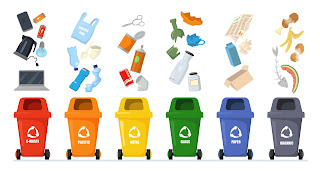A 5-Step Guide to Efficiently Manage The Lifecycle of Branded Merchandise
In the dynamic realm of corporate branding, the lifecycle of branded merchandise holds a pivotal role that extends beyond just marketing strategies. Today, businesses are not only challenged with establishing a strong brand presence but also with the responsible management of their branded items. This challenge becomes particularly pronounced during periods of rebranding, mergers, acquisitions, or shifts in marketing strategies, which can render existing merchandise obsolete.
In conclusion, efficiently managing the lifecycle of branded merchandise is not just a necessity but an opportunity for businesses to showcase their commitment to sustainability, responsible resource management, and brand enhancement. By following this 5-step guide, corporate marketing professionals can navigate the complexities of the corporate landscape, turning challenges into avenues for cost savings and positive environmental impact.
Step 1: Assess and Inventory
The first crucial step in managing the lifecycle of branded merchandise is to conduct a comprehensive assessment and inventory. This involves identifying all existing branded items, categorizing them, and determining their current relevance to the brand. By creating a detailed inventory, companies gain insights into the scope of the challenge and lay the foundation for informed decision-making.Step 2: Strategic Reuse and Repurpose
Rather than seeing obsolete merchandise as a sunk cost, companies can explore opportunities for strategic reuse and repurposing. This step involves identifying ways to integrate existing branded items into new campaigns, events, or initiatives. By doing so, businesses not only reduce waste but also maximize the value of their initial investment.Step 3: Responsible Disposal
For items that cannot be repurposed, responsible disposal becomes imperative. This step emphasizes eco-friendly practices such as recycling or upcycling to minimize the environmental impact of discarded merchandise. By choosing sustainable disposal methods, companies contribute to a greener future while maintaining corporate responsibility.Step 4: Donation and Corporate Social Responsibility (CSR)
Transforming branded merchandise into a force for good, consider donating items to charitable organizations or incorporating them into corporate social responsibility (CSR) initiatives. This not only fosters a positive brand image but also creates opportunities for community engagement.Step 5: Future-Proofing Strategies
To prevent future challenges associated with branded merchandise, it's crucial to implement future-proofing strategies. This includes designing merchandise with longevity in mind, considering modular or adaptable branding elements, and staying agile to accommodate potential changes in branding direction.In conclusion, efficiently managing the lifecycle of branded merchandise is not just a necessity but an opportunity for businesses to showcase their commitment to sustainability, responsible resource management, and brand enhancement. By following this 5-step guide, corporate marketing professionals can navigate the complexities of the corporate landscape, turning challenges into avenues for cost savings and positive environmental impact.



Comments
Post a Comment